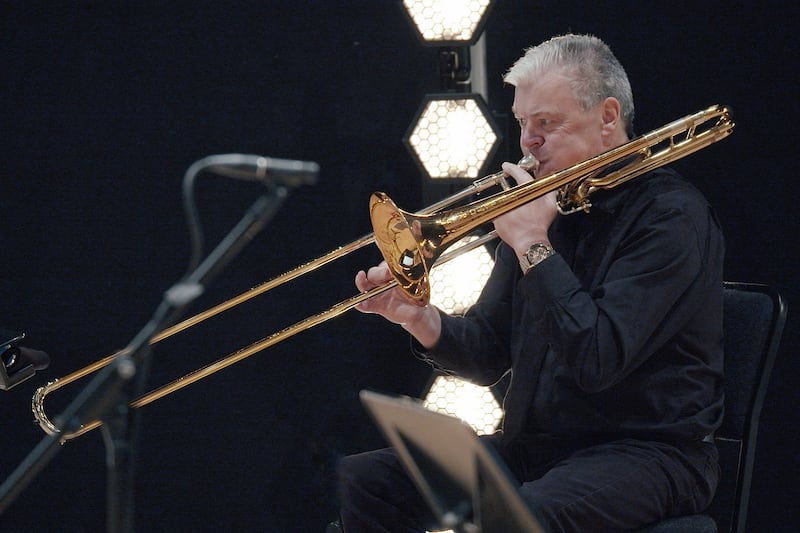“He ain’t heavy, he’s my brother” sang the Hollies in their 1969 golden oldie and the same could be said about Fintan Vallely’s recently updated version of The Companion to Irish Traditional Music.
It’s a hefty 964 pages so it’s not a companion you would take out on a stroll with you, but it will become like a brother to anyone even remotely interested in the music of Ireland and its iterations at home and abroad, such is the depth and breadth of the knowledge contained within its covers.
The Companion to Irish Traditional Music is “the largest single collection of information on the genre”, bringing together the knowledge of 215 contributors in an easy-to-use A-Z format, with 850 biographies, 300 images and 90 music transcriptions. A labour of love for Fintan Vallely, a man who has travelled the highways and byways playing the flute in all kinds of settings but who has also ploughed his furrow in the media and academia.
“Prior to Covid, like everybody else, I was doing 50 or 60 gigs every year, or even more sometimes, but I’m not working at that level any more,” says 74-year-old Vallely.
“I was doing it full time for a long time, and in the 1980s Tim Lyons and I travelled an awful lot but then there came a kind of shift in my axis.
“Once I started writing for the Irish Times, they didn’t expect me to play as well.
“Then I was teaching at third level universities for 15 years, but I was still playing here and there during that period, but it stopped me touring abroad.
“But when I looked back at my diaries from 1996, I was in about 12 different countries over the course of that year including Indonesia, America, Canada, Germany and a lot of other places.
“Those gigs don’t exist anymore unless you’re a big name, but I’m not in that league and I never particularly wanted to be either.
“Some of them were prestige events of course, but I do less of them now. I’m getting too old as well.”
While writing his books, reviews and articles, Fintan collected a huge amount of information and that’s what gave him the idea for the Companion to Irish Traditional Music.
Beautifully produced by Cork University Press, it is a cornucopia of the well-known and the esoteric in the music of Ireland.
“About half the material in the book is totally new,” Fintan tells me.
“There is a new section which details all the winners of the senior Fleadh competitions for the past 73 years, a mammoth task Kildare fiddle-player Fintan Farrell set himself to complete in his spare time working on a database of 56,000 results.
“The fruits of his labour are in the Companion.
“Another change is that I didn’t include Scottish, English, Cape Breton nor Breton music because so much of that information is available elsewhere where it wasn’t when the first edition came out in 1999.”
Irish traditional music is also put into its context in the companion with new articles on social issues like gender which is an increasingly important issue in traditional music.
There’s some more stuff on composition and arrangement as well as articles about classical adaptations of various tunes by European composers in the 18th and 19th centuries which are very new articles.
“The dance material has all been tightened up and I guess the Companion is now the biggest body of information on Irish dance that there is anywhere, it’s all covered,” says Fintan.
If you are a musician, you will find lots of detail about your instrument in the Companion, from the uilleann pipes and harp to the spoons.
Needless to say the ebb and flow of Irish music is reflected in the Companion. New genres are being created all the time, with bands and singers using traditional music as a foundation on which to add their own esoteric layers.
According to Fintan, “song is becoming kind of classicised and dance music is becoming rockified”.
“For example, with instrumentation, the singer has to measure what they’re doing exactly, it has to go on a regular beat, so that takes the spontaneity out of it,” he claims.
“Some singers have gone from being folk singers to more angst-ridden singer-songwriter types.”
But there is also a tremendous amount of joy in Fintan’s Companion to Irish Traditional Music. The sheer variety of artists from Delia Murphy to Moving Hearts, from the Kilfenora Ceili Band to Horslips, is uplifting.
What music was played in medieval Ireland? Who has sung with Dé Danann? Did the bodhrán really develop from the tambourine? How did Irish music develop in Chicago?
There are dozens of answers to an infinity of questions on each of the Companion’s 964 pages which of course, makes it the perfect reference book, one to dip into when your curiosity is piqued.
As well as the book, there are also some resources online for you to check out. There is a dedicated website comitm.com, an e-book version for kindle and iBooks.
As well, there is Compánach, a double CD with 27 tracks that cover music and song associated with the Irish counties and diaspora regions, organised alphabetically from Antrim to Wicklow and Turas, a companion DVD which covers hundreds of people, the notation of all the music, and images of book covers - all displayed in conjunction with the tunes and songs, and chosen for their association with each county in Ireland, and with America and England.
The book on the other hand, invites you into the extended Irish music family, introduces you to the members, tells you wonderful stories, sets tunes playing in your heads, encourages your feet to dance and takes you on an unexpected journey to places you didn’t know existed.







